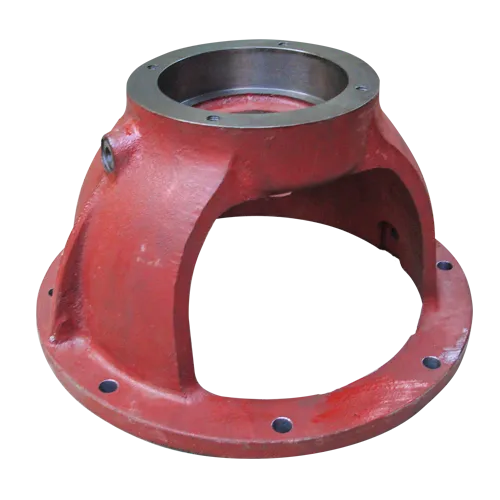Mobile:+86-311-808-126-83
Email:info@ydcastings.com
German
pump impeller casting
The Art and Science of Pump Impeller Casting
Pump impellers are critical components in various industries, facilitating the movement of fluids through pumps. Their design and manufacturing process significantly affect the efficiency and performance of pumping systems. Among various methodologies for producing pump impellers, casting stands out as a particularly effective technique that combines precision, efficiency, and cost-effectiveness. This article delves into the intricacies of pump impeller casting, its advantages, and its applications.
Understanding Pump Impellers
Pump impellers are rotating elements that impart kinetic energy to the fluid. The shape and design of an impeller are crucial for optimizing fluid flow dynamics. Common materials used for pump impeller construction include metals like cast iron, bronze, stainless steel, and more modern materials such as polymer composites. The choice of material not only influences the performance but also affects the durability and corrosion resistance of the impeller.
The Casting Process Explained
The casting process involves heating metal until it liquefies and then pouring it into a mold to solidify into the desired shape. There are several casting techniques, including sand casting, investment casting, and die casting. Each method has its own set of advantages, but for complex geometries often required in pump impellers, investment casting is frequently favored due to its high precision and surface finish.
1. Pattern Making The first step is creating a pattern, which is a replica of the impeller. Patterns can be made from materials such as wood, metal, or plastic.
2. Mold Creation The pattern is then used to create a mold, typically made from sand or ceramic materials. In investment casting, a wax or plastic pattern is often coated with a ceramic shell that hardens.
3. Melting and Pouring Once the mold is ready, metal is melted in a furnace and poured into the mold. The temperature and pouring speed can affect the final properties of the casting.
4. Cooling As the molten metal cools, it solidifies into the shape of the impeller. This process must be carefully controlled to prevent defects like warping or shrinkage.
5. Finishing After the casting cools, it is removed from the mold and undergoes various finishing processes, including machining, cleaning, and possibly surface treatment, to enhance its properties and appearance.
Advantages of Casting for Pump Impellers
Casting offers numerous advantages for manufacturing pump impellers
pump impeller casting

- Complex Shapes The ability to create intricate designs without the need for extensive machining makes casting ideal for impellers with complicated geometries.
- Material Efficiency Casting can minimize waste compared to other methods, as excess material can often be returned to the production cycle.
- Cost-effectiveness For large production runs, casting can be more economical than machining, especially when considering labor and material costs involved in other manufacturing processes.
- Customizability Casting allows for the production of tailored impellers that meet specific performance criteria, essential for industries with unique operational needs.
Applications of Pump Impellers
Pump impellers are ubiquitous across various sectors, including
- Water and Wastewater Management Used in pumping stations and treatment facilities to move water and waste.
- Chemical Manufacturing Essential in processes requiring the transport of corrosive or volatile fluids, where material selection is critical.
- HVAC Systems Impellers help circulate air and fluids in heating and cooling systems, ensuring efficient temperature regulation.
- Oil and Gas Industry Specialized impellers are used for transferring crude oil and refined products in pipelines and storage facilities.
Conclusion
In summary, pump impeller casting combines artistry and engineering, producing components vital for fluid dynamics across a multitude of industries. The casting process not only allows for the creation of intricate designs but also ensures efficiency and cost-effectiveness. As technology continues to advance, we can expect even more innovations in casting techniques, further enhancing the capabilities of pump impeller design and production.











